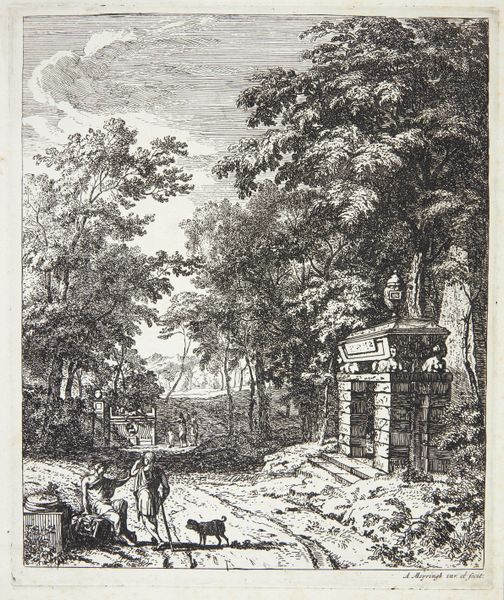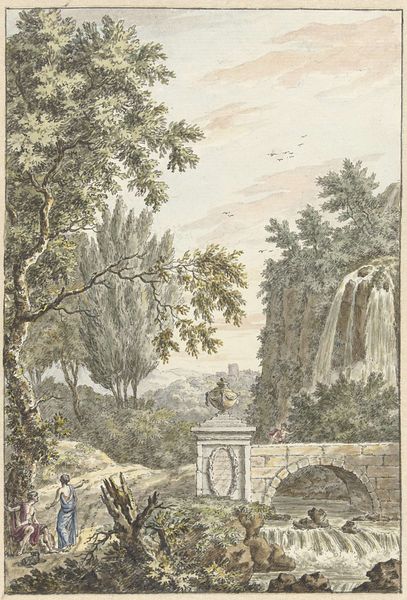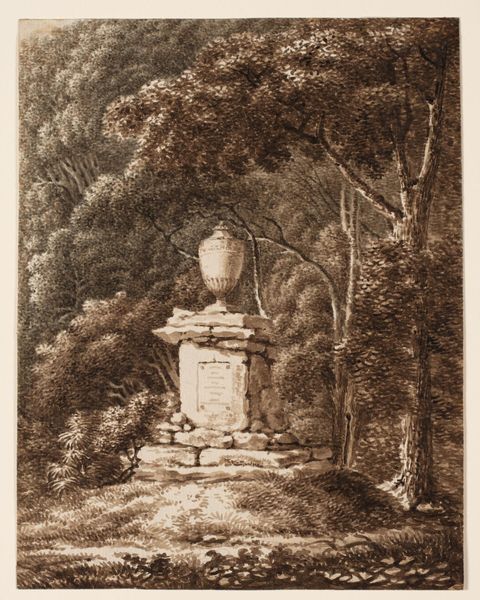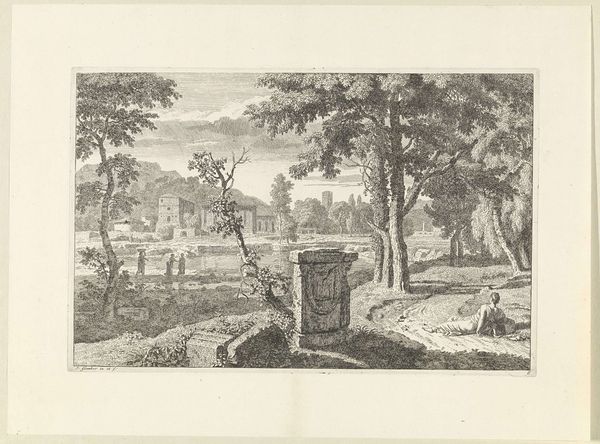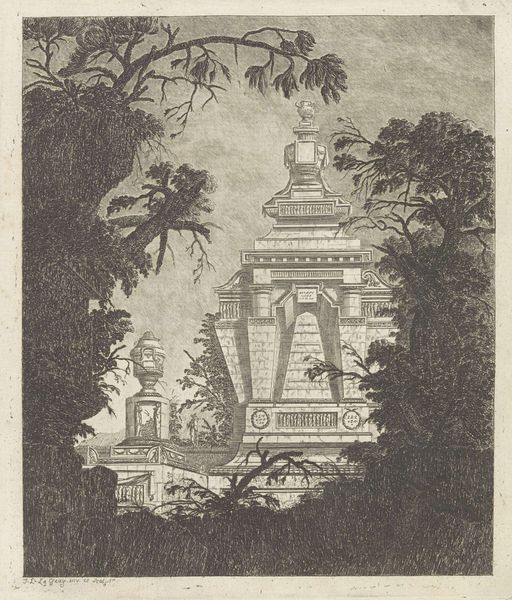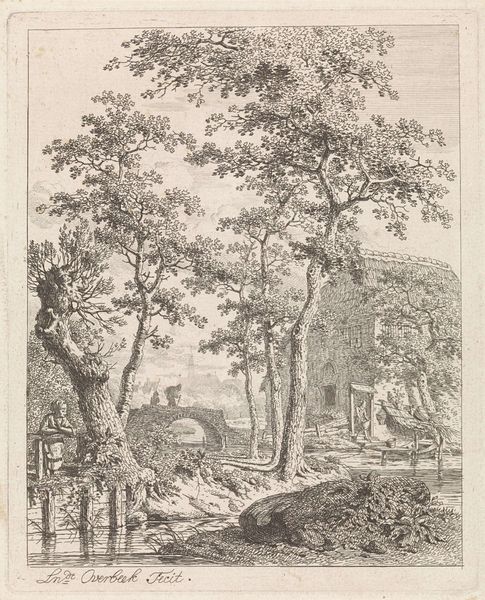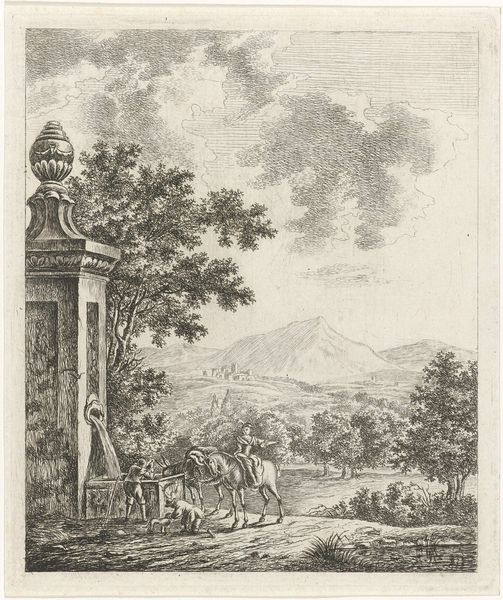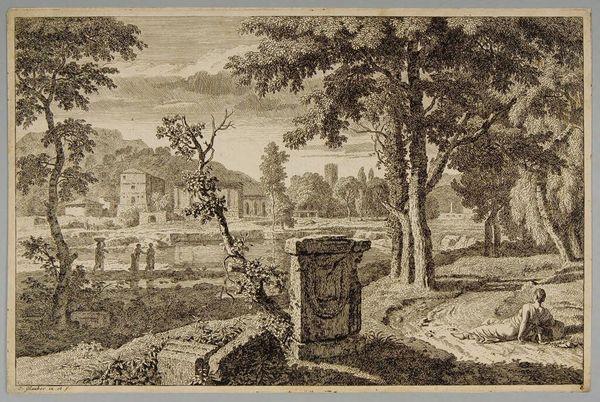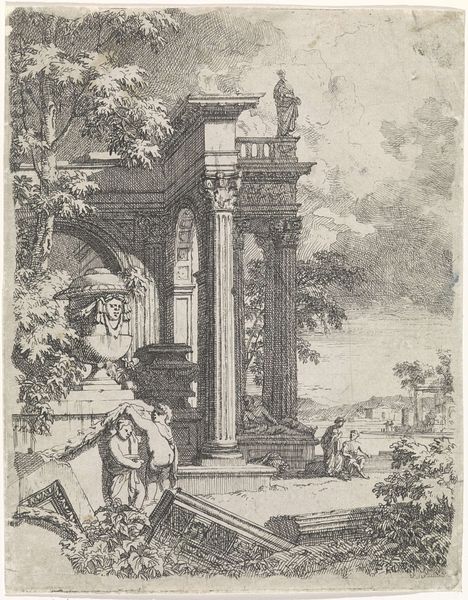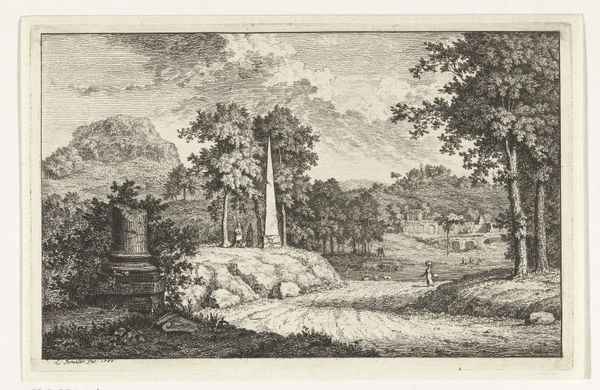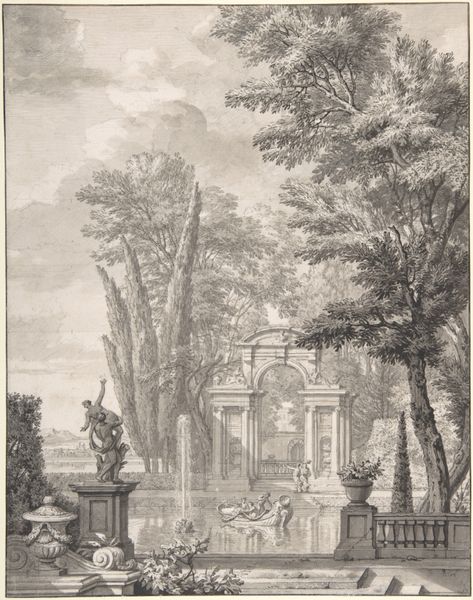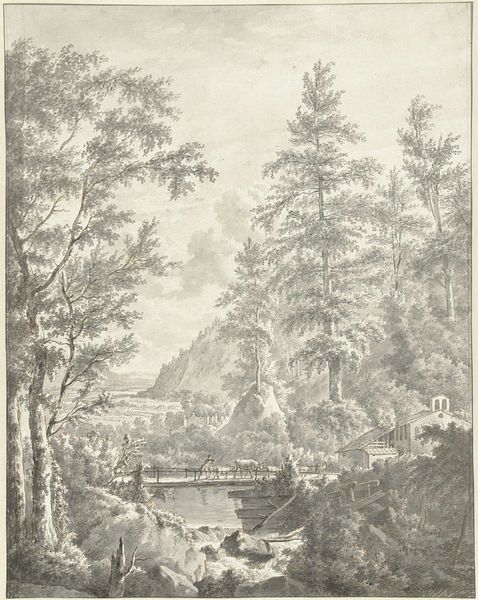
print, etching, engraving
#
baroque
# print
#
pen sketch
#
etching
#
pencil sketch
#
old engraving style
#
landscape
#
classical-realism
#
pen-ink sketch
#
line
#
pen work
#
cityscape
#
engraving
Dimensions: height 206 mm, width 160 mm
Copyright: Rijks Museum: Open Domain
Editor: Here we have Pieter van den Berge’s "Fountain with Garden Vase," an etching and engraving from between 1687 and 1744. It strikes me as such a peaceful scene, very meticulously rendered. What catches your eye when you look at it? Curator: I'm drawn to the symbols, of course. Notice how the urn, prominently placed, becomes a vessel not just for water or plants, but for cultural memory. The figures carved upon it – do they suggest specific stories, perhaps classical myths revisited? How does their presence affect our understanding of this garden? Editor: I see what you mean. It almost elevates the scene, placing it within a historical context. The figures in the garden then, do they have a connection to the urn’s imagery? Curator: Possibly. Or consider them as echoes of an ideal, a pursuit of harmony found in both nature and artifice. The fountain, the meticulously planned landscape... Aren’t they symbols of control, perhaps a wish to impose order on the unpredictable flow of life? The water becomes not just a feature, but a metaphor. What does it say to you? Editor: Hmm, maybe about humanity's relationship with the natural world? Seeking beauty while also trying to control it? Curator: Precisely! And it appears the garden alludes to a cultural and perhaps political history through the iconography on the vase itself, inviting the viewer to delve deeper into its symbolism and purpose. The very act of creating such a detailed engraving, isn't it a testament to humanity's enduring need to leave its mark? Editor: It’s fascinating how much can be gleaned from what initially appears to be a simple garden scene. I see so much more now than I did at first glance. Curator: Indeed! It’s in decoding these visual cues, that images continue to resonate across time. Each symbol echoes the cultural memory.
Comments
No comments
Be the first to comment and join the conversation on the ultimate creative platform.
